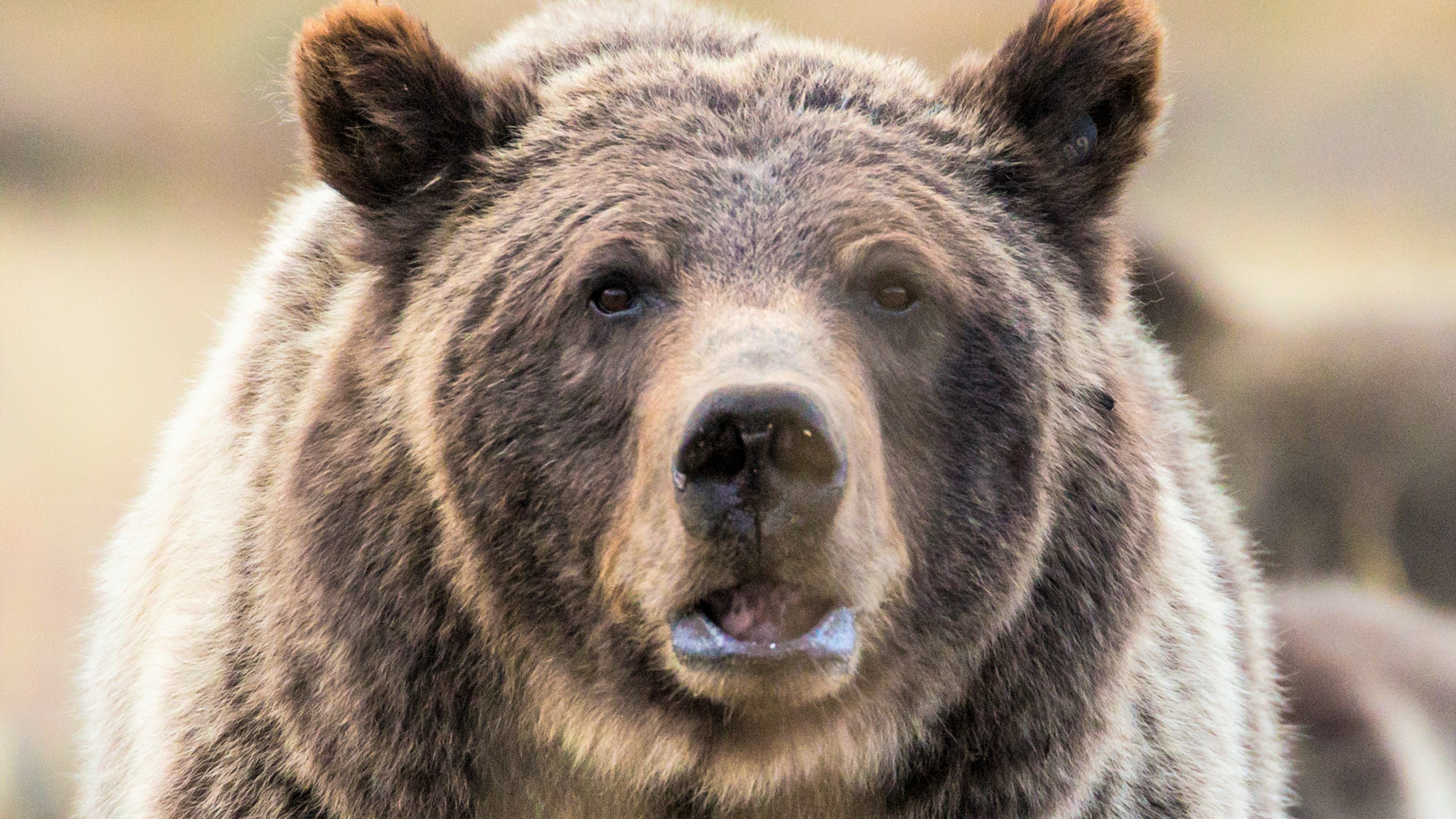
Rangers at Yellowstone National Park were less than impressed when a visitor leapt right into the road right in front of them to get a photo of a grizzly bear. The animal had just crossed when the man jumped out to get a shot of it running uphill.
The incident was caught on camera by self-professed Yellowstone enthusiast Julia Cook and shared via Instagram account TouronsOfNationalParks, which calls out bad behavior at sites of natural beauty. Cook's photo, which you can see below, shows the man poised with his camera dangerously near to the animal, which could have closed the distance between them in seconds.
Yellowstone is home to both black bears and grizzly bears, both of which can be any color from blond to black, but this creature is clearly identifiable as a grizzly due to the distinctive hump on its shoulders. They are also larger and more prone to aggression than black bears, making this a particularly dangerous situation.
Attacks on humans are rare, but they do happen. Last month, a woman was fatally mauled by a grizzly bear just outside Yellowstone while exploring alone. In April 2021 a backcountry guide was mauled to death by a grizzly while fishing on the border of Yellowstone National Park, and three months later a person was killed by a grizzly at a campground in western Montana.
Safety in grizzly country
The National Park Service (NPS) warns visitors that all wild animals are unpredictable, and it's important to check the specific guidance for the park you intend to visit before heading out.
Wildlife is always best appreciated from the safety of a vehicle. Rules vary between parks, but generally speaking you should stay at least 25 yards away from animals like elk and bison, and 100 yards from predators like bears and wolves.
You should also take care not to disturb wildlife by approaching, touching, feeding, or otherwise interacting with animals. Doing so puts both you and the animal at risk, can spread disease, and increases the odds of a dangerous close encounter in future.
For more advice, see our guides what to do if you meet a bear and wildlife safety: eight tips for unexpected encounters.







